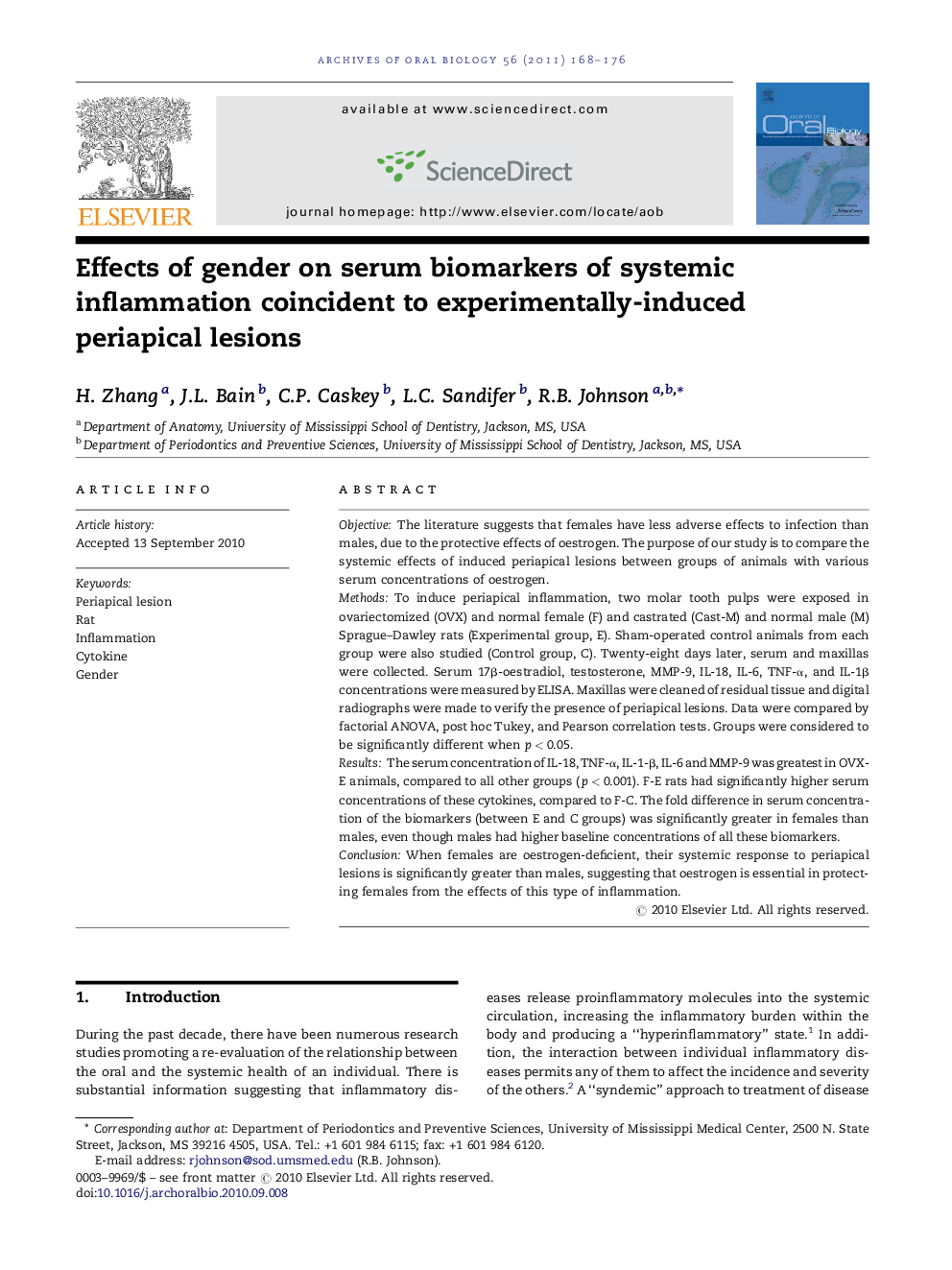| Article ID | Journal | Published Year | Pages | File Type |
|---|---|---|---|---|
| 3121030 | Archives of Oral Biology | 2011 | 9 Pages |
ObjectiveThe literature suggests that females have less adverse effects to infection than males, due to the protective effects of oestrogen. The purpose of our study is to compare the systemic effects of induced periapical lesions between groups of animals with various serum concentrations of oestrogen.MethodsTo induce periapical inflammation, two molar tooth pulps were exposed in ovariectomized (OVX) and normal female (F) and castrated (Cast-M) and normal male (M) Sprague–Dawley rats (Experimental group, E). Sham-operated control animals from each group were also studied (Control group, C). Twenty-eight days later, serum and maxillas were collected. Serum 17β-oestradiol, testosterone, MMP-9, IL-18, IL-6, TNF-α, and IL-1β concentrations were measured by ELISA. Maxillas were cleaned of residual tissue and digital radiographs were made to verify the presence of periapical lesions. Data were compared by factorial ANOVA, post hoc Tukey, and Pearson correlation tests. Groups were considered to be significantly different when p < 0.05.ResultsThe serum concentration of IL-18, TNF-α, IL-1-β, IL-6 and MMP-9 was greatest in OVX-E animals, compared to all other groups (p < 0.001). F-E rats had significantly higher serum concentrations of these cytokines, compared to F-C. The fold difference in serum concentration of the biomarkers (between E and C groups) was significantly greater in females than males, even though males had higher baseline concentrations of all these biomarkers.ConclusionWhen females are oestrogen-deficient, their systemic response to periapical lesions is significantly greater than males, suggesting that oestrogen is essential in protecting females from the effects of this type of inflammation.
